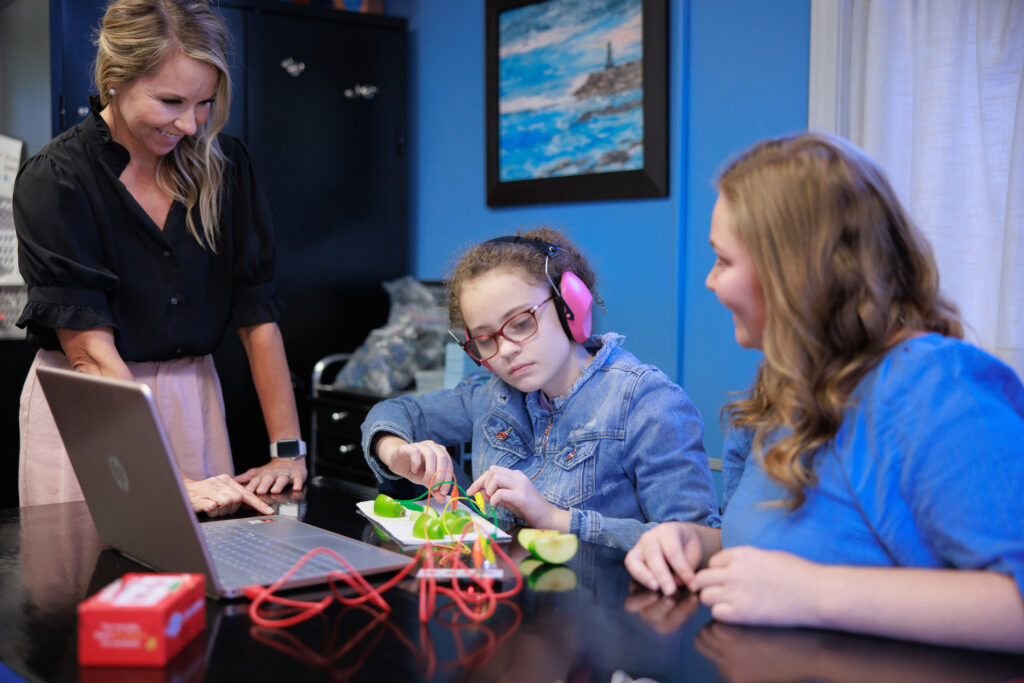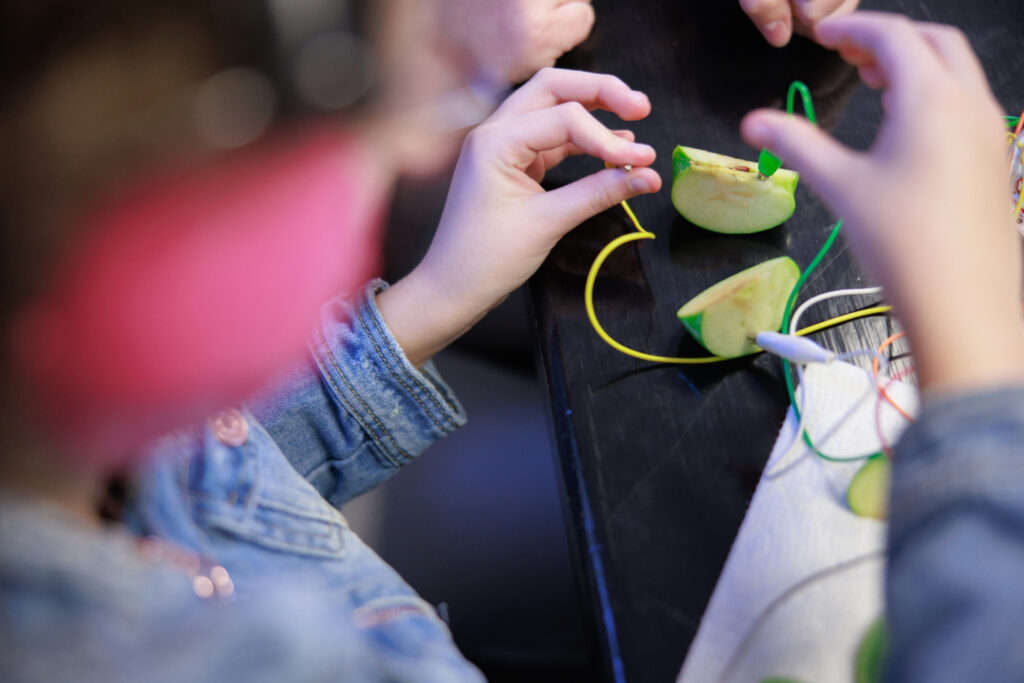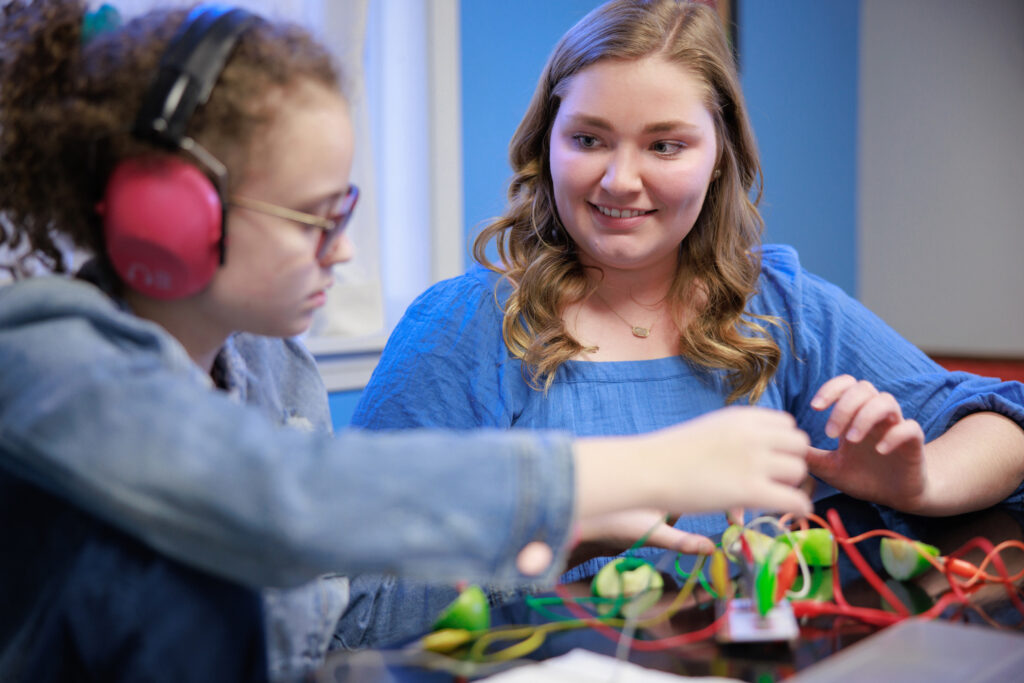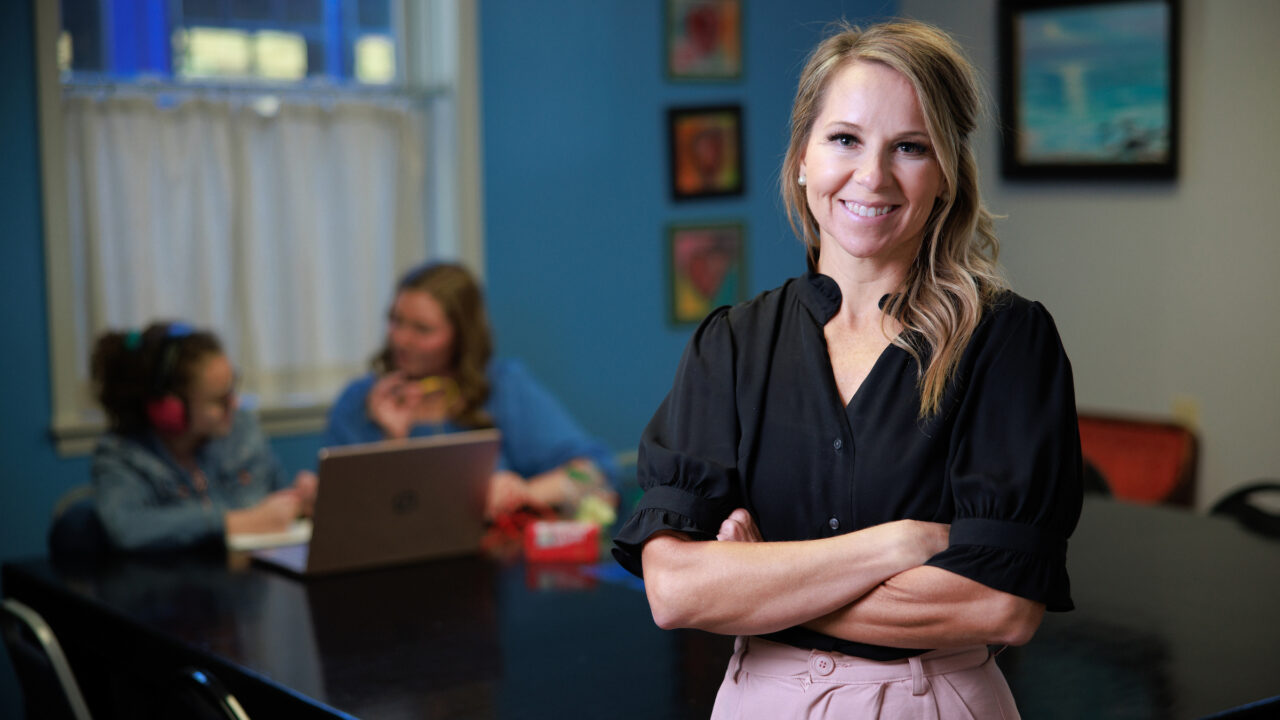Fayard Endowed Chair for Literacy Excited for Partnerships, Resources at UA
At the turn of the century, the internet was no longer in its infancy nor limited to dial-up speeds and wired connections. File-sharing, social media and e-commerce had emerged. Computer technology was rapidly evolving and becoming more affordable.
Schools were eager to leverage new technology to improve learning and instruction, though sometimes without a plan to implement it.
“There was no training for teachers back then,” said Dr. Amy Hutchison, a K-12 teacher in the early 2000s and Fayard Endowed Chair in Literacy Education at The University of Alabama. “Laptops were coming into schools and teachers had no idea what to do. There was no structure or intention, and that drove me crazy.”
The future was then, and the future is now. School curricula and activities are continually developing to help future generations thrive in advanced digital spaces. From coding to artificial intelligence, students as young as 5 years old are learning to think and understand digitally.
But as this evolution continues, today’s students and teachers must keep pace. Hutchison says advancing to complex learning activities such as coding and using AI tools requires a strong footing in digital literacy. And for more than 20 years, Hutchison has worked to ensure both students and teachers are equipped for the future.

In August 2022, Hutchison was named Fayard Endowed Chair in Literacy Education at The University of Alabama, a position established through a $2 million gift from Nancy and Gary Fayard.
“Because we live in the world that we do, it’s very uncommon that students are only doing print-based reading and writing,” Hutchison said. “And in the workforce, the use of digital tools for reading and writing is becoming much more common. So, there’s a new type of literacy, and my focus is on preparing students to be literate in a world constantly changed by technologies.”
Since arriving at UA, Hutchison has been awarded a pair of National Science Foundation grants to help area youth improve literacy skills and use them to read and write with technology. This multi-pronged approach includes a partnership with Arts ‘n Autism in Tuscaloosa to offer computer science education to students with autism spectrum disorder. The other NSF-funded project aids in the research and development of Compose with AI, a platform to help young learners evaluate and vet AI-generated content for science-based writing.
…My focus is on preparing students to be literate in a world constantly changed by technologies.
Dr. Amy Hutchison, Fayard Endowed Chair in Literacy Education
Hutchison said some schools have blocked the use of AI tools on their networks to combat plagiarism and misinformation, but students are finding workarounds.
“We’re designing a platform in all the ways one can use AI beyond writing a paper, like for ideation or creating an outline,” she said. “Then, they’re getting the critical evaluation skills and learning how to integrate what they use from AI with appropriate citations.
“We’re excited about this project because there’s a tremendous need in schools right now.”
A focus on community
Hutchison’s research projects are rooted in schools and anchored by strong community partnerships. Some aspects of her research can be done in lab space at the recently renovated UA Literacy Center, but the nature of Hutchison’s work requires consistent access to K-12 classrooms and buy-in from teachers and administrators.

The benefits of community-based research, especially with a STEM focus, may seem obvious. But there’s no guarantee of an open door for researchers, Hutchison said.
“It’s much different going into schools where the university is seen as a true partner,” she said. “Just being affiliated with UA has created so many new opportunities. For instance, when I wanted to work with Arts ‘n Autism, [the agreement] was done in a day. That’s usually a weeks-long process, sometimes much longer at my previous institutions.”
Hutchison said her “wheels have been spinning” as she identifies more areas to study. She submitted six proposals in her first year at UA, some currently under review.
“I’m working to build a good team of grad students, and I’m beginning to collaborate with other faculty members on both projects,” Hutchison said. “I’m really excited to be here.”
Hutchison has a third NSF grant at UA that she transferred from her previous institution, George Mason University. The project teaches students how to use print-based writing skills to code anything they want, like an animated story or a game. That study involves 100 teachers and 2,500 students, some in Northern Virginia. Hutchison has applied for additional funding to expand the study to include students and teachers in West Alabama.
“We are excited about the energy and expertise Dr. Hutchison is bringing to literacy education at the University,” Nancy Fayard said. “Working within the new literacy center, Dr. Hutchison and staff will ensure future educators are on the leading edge of best practices for building strong literacy education.”
Shared inspirations
Hutchison, Dr. Lucy Barnard-Brak, co-investigator for the project, and Caitlin Renda, a first-year graduate student in the collaborative special education program, visit Arts ‘n Autism twice a week after regular school hours to implement the computer science project.

There, they teach children with autism spectrum disorder how to code, control and program robots using different types of robotics programs. Each week, they evaluate how the students react to the complexities of the activity and, from there, determine the level of support they need. The end goal, Renda said, is to create a full-time robotics program for the after-school program at Arts ‘n Autism.
Both Renda and Hutchison are motivated to work with students with multiple abilities due to their respective familial connections and experiences; Hutchison has two children who have autism spectrum disorder, and Renda has a cousin with autism spectrum disorder.
For Renda, who began working as a graduate assistant for Hutchison at the start of Fall Semester 2023, each interaction, challenge or breakthrough with students at Arts ‘n Autism affirms her decision to pursue a career as a teacher.
“We had one student who rarely talks, and one day, he’s using this app to play piano and begins talking and telling us what he’s doing,” Renda said. “He then switched to a different robot and was explaining what he was doing and how it worked. It was so cool seeing that happen.
“So, it’s important to give these opportunities to every student — regardless of ability — and reach that child in whatever it is you’re doing,” Renda added. “You should be the teacher who can reach all students in the same capacity.”
